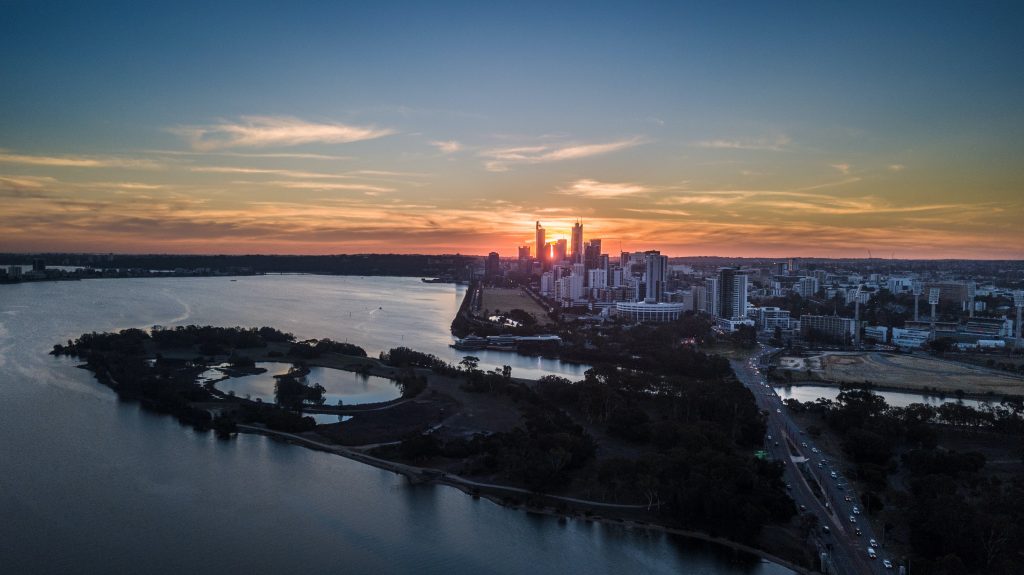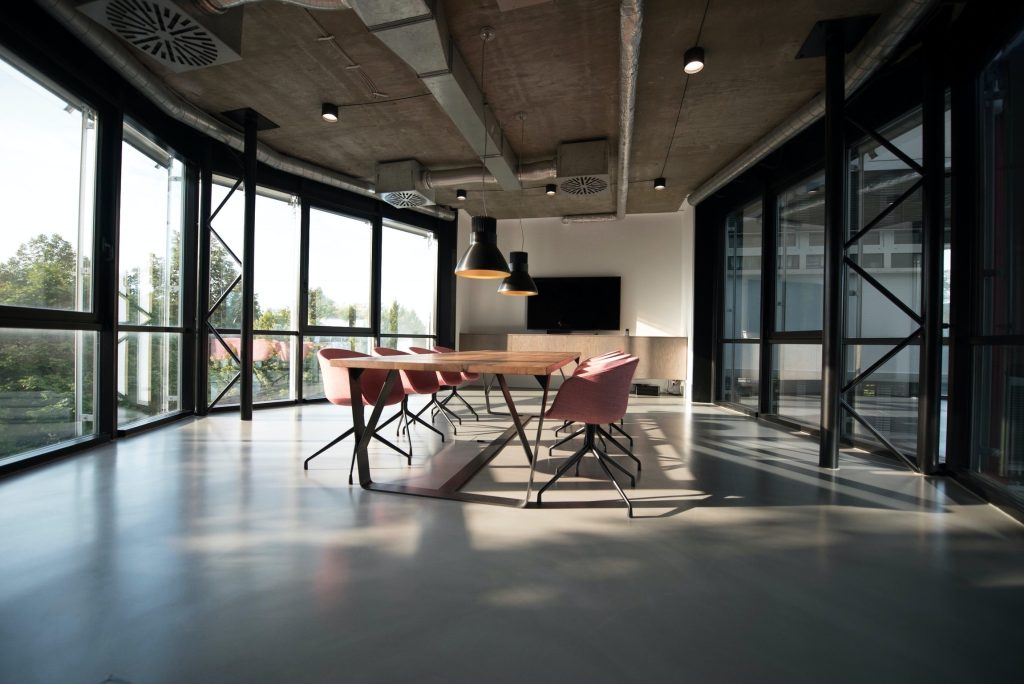Perth Commercial Real Estate: Unveiling Lucrative Opportunities
The Western Australian city of Perth has long been known for its natural beauty and laid-back lifestyle. But in recent years, it has also emerged as a prime location for commercial real estate investment. With a growing economy and a range of infrastructure and development projects underway, Perth is quickly becoming a hub for business and investment opportunities.
Understanding Perth’s Commercial Real Estate Market
As with any real estate market, understanding the underlying trends, demographics and drivers of demand is critical for investors to make informed decisions. Perth’s commercial real estate market is complex and dynamic, but can be broadly divided into four types of properties: office spaces, retail properties, industrial and warehouse spaces, and mixed-use developments. Each of these sectors has its own unique supply and demand drivers, and investors need to understand these dynamics in order to make the most of their investments.
Key Factors Driving Demand
At a high level, population growth and economic activity are the two primary drivers of commercial real estate demand in Perth. The city has seen healthy population growth in recent years, with new migrants attracted by the city’s job opportunities and quality of life. Meanwhile, the local economy has been performing well, with the mining industry and associated service sectors playing a significant role in driving growth.
Perth’s office spaces have been in high demand, with businesses from a range of industries seeking to establish a presence in the city. The retail sector has also been performing well, with consumers continuing to spend despite the challenging economic conditions. The industrial and warehouse spaces have seen an increase in demand due to the growth of the mining industry and the associated logistics and transport needs.
Market Trends and Predictions
The commercial real estate market in Perth has been steadily growing over the past few years, with rental and occupancy rates rising across most sectors. The trend is expected to continue in the near future, with a number of large infrastructure projects planned for the region. This includes the planned construction of the Metronet rail network, which is expected to spur further development and investment in the areas surrounding the new stations.
Perth’s commercial real estate market is also expected to benefit from the city’s growing reputation as a hub for innovation and entrepreneurship. The city has a thriving start-up scene, with a number of co-working spaces and incubators supporting the growth of new businesses. This is likely to drive demand for office spaces and mixed-use developments in the coming years.
Another trend that is expected to shape Perth’s commercial real estate market is the increasing focus on sustainability and green buildings. With a growing awareness of the impact of climate change, investors are increasingly looking for properties that are energy-efficient and environmentally friendly. This is likely to drive demand for properties that have been designed with sustainability in mind.
In conclusion, Perth’s commercial real estate market is complex and dynamic, but offers a range of opportunities for investors who are willing to take the time to understand the underlying trends and drivers of demand. With a growing population, a thriving economy, and a number of large infrastructure projects in the pipeline, the city’s commercial real estate market is well-positioned for growth in the coming years.
Types of Commercial Real Estate in Perth
Perth, the capital city of Western Australia, has a thriving commercial real estate market that offers a range of investment opportunities. Let’s take a closer look at the various types of commercial real estate on offer in Perth and the unique attributes of each.
Office Spaces
Perth’s office market has been relatively stable in recent years, despite the slowdown in the mining industry. The city offers a range of office properties, from large high-rise buildings in the city centre to smaller, boutique spaces in the suburbs. The CBD is the most sought-after location for office space due to its proximity to major transportation links, retail and dining options, and other amenities. Demand for premium office space is high, and vacancy rates in the CBD are low. However, with more office building projects in the pipeline, it remains to be seen how these trends will evolve in the coming years.
In addition to the traditional office spaces, Perth also has a growing co-working industry. Co-working spaces offer a more flexible and cost-effective option for businesses that don’t require a permanent office space. These spaces provide a collaborative environment where entrepreneurs and freelancers can work alongside each other and share resources. Perth’s co-working spaces are located throughout the city, providing a range of options for businesses of all sizes.
Retail Properties
The retail sector in Perth has been somewhat mixed in recent times, with some areas experiencing high vacancy rates while others remain in high demand. The rise of e-commerce has also impacted brick-and-mortar shops, meaning investors need to be careful when selecting retail properties. However, with the local population continuing to grow, there are still opportunities for investors to achieve strong returns in the right locations.
Perth has a diverse range of retail properties, from large shopping centres to small boutique stores. The city’s major shopping centres, such as Westfield Carousel and Karrinyup Shopping Centre, offer a wide range of retail and dining options, as well as entertainment facilities such as cinemas and bowling alleys. In addition, Perth has a number of popular retail precincts, including the trendy suburb of Subiaco and the historic port city of Fremantle.
Industrial and Warehouse Spaces
Perth’s industrial and warehouse sector has been buoyed by the state’s mining industry, with high demand for warehouses and logistics facilities. The city has a number of industrial estates located throughout the metropolitan area, providing businesses with easy access to major transportation links and distribution networks. However, the current shift towards greener, more sustainable development means industrial properties that incorporate environmentally-friendly features are likely to be in higher demand in future.
As with other sectors, peripheral regions are attracting investment and development in a bid to balance supply and demand. For example, the Perth Airport Business Park is a major industrial estate located just minutes from the airport, providing businesses with easy access to both air and road transportation links.
Mixed-Use Developments
Mixed-use developments are becoming increasingly popular in Perth, as developers seek to create sustainable, community-focused projects that offer a mix of residential, commercial, and retail spaces. These projects have the potential to be highly profitable, but also require a greater degree of planning and investment compared to single-use developments.
One example of a mixed-use development in Perth is the Elizabeth Quay precinct. Located on the banks of the Swan River, Elizabeth Quay is a vibrant hub of activity that includes residential apartments, commercial office space, retail and dining options, and public spaces for events and entertainment. The development has transformed the area into a thriving community, attracting both locals and tourists alike.
Overall, Perth’s commercial real estate market offers a range of investment opportunities across various sectors. With its growing population and strong economy, the city is set to continue its growth trajectory in the coming years.
Top Commercial Real Estate Locations in Perth
Perth, the capital city of Western Australia, is a vibrant and growing city that offers a range of commercial property opportunities. While there are commercial property opportunities throughout Perth, some areas are particularly attractive for investors. Here are a few of the most popular areas:
Central Business District (CBD)
The Perth CBD remains a popular location for office and retail investments due to its centrality and accessibility. The CBD is the heart of Perth’s commercial district, and is home to some of the city’s most iconic buildings, such as the Bankwest Tower and the QV1 Building. In particular, areas such as St Georges Terrace and Hay Street Mall are highly sought after due to their prime locations and high foot traffic.
Aside from its commercial appeal, the Perth CBD is also a cultural hub, with a range of art galleries, museums, and theatres located in the area. The State Theatre Centre of Western Australia and the Perth Cultural Centre are just some of the cultural landmarks that can be found in the CBD.
Suburban Hotspots
Suburban locations such as West Perth, Fremantle, and Subiaco are also seeing increased levels of investment and development. These locations offer a more affordable option for businesses and investors, while still providing convenient access to the city centre. West Perth, for example, is a popular choice for businesses in the mining and resources sector, due to its proximity to key industry players and government agencies.
Fremantle, on the other hand, is a historic port city that has recently undergone significant redevelopment. The area is now home to a range of cafes, restaurants, and boutique shops, making it an attractive location for businesses in the hospitality and tourism industries. Subiaco, meanwhile, is a thriving commercial and entertainment precinct that is home to a range of businesses, from small startups to large corporations.
Emerging Areas for Investment
A number of emerging pockets in the city, such as Elizabeth Quay and the Perth City Link, are also attracting attention from investors. These areas are seeing significant redevelopment and infrastructure projects, which is driving demand for commercial properties. Elizabeth Quay, for example, is a waterfront development that is set to become a major tourist destination, with a range of hotels, restaurants, and entertainment venues planned for the area. The Perth City Link, meanwhile, is a major transport hub that is set to link the CBD with Northbridge, one of Perth’s most vibrant cultural precincts.
Investing in commercial real estate in Perth can be a smart move for businesses and investors looking for long-term growth and stability. With a range of attractive locations to choose from, there is sure to be a commercial property that meets your needs and budget.
Investment Strategies for Perth Commercial Real Estate
Perth, the capital city of Western Australia, is a thriving hub for commercial real estate investment. With a growing population and a booming economy, the city offers a range of opportunities for investors looking to grow their portfolios. When it comes to commercial real estate investment, there are a range of strategies that investors can pursue. Here are a few to consider:
Long-Term vs. Short-Term Investments
Investors may choose to focus on either long-term or short-term investment strategies, depending on their goals and risk appetite. Short-term investments may involve buying and flipping properties, while longer-term investments may involve purchasing and holding onto properties for rental income and potential long-term capital gains. It is important to note that both strategies carry their own set of risks and rewards, and investors should carefully consider their options before making a decision.
For those looking to invest in the long-term, commercial real estate can offer a stable and reliable source of income. By purchasing a property and leasing it out to tenants, investors can generate a regular stream of rental income while also benefiting from potential capital gains over time. This strategy requires patience and a long-term perspective, but can be highly rewarding for those who are willing to wait.
Short-term investments, on the other hand, can offer quick returns for investors who are willing to take on more risk. By buying a property and quickly flipping it for a profit, investors can generate a significant return on their investment in a relatively short amount of time. However, this strategy requires a keen eye for market trends and a willingness to take on the risks associated with property development and renovation.
Diversifying Your Portfolio
Investors should also consider diversifying their portfolio across multiple sectors and locations to minimize risks. This may involve investing in different property types, diversifying within the same sector, or even looking beyond Perth to other cities or regions in Australia. By spreading their investments across a range of properties and locations, investors can reduce their exposure to market fluctuations and minimize the impact of any single property underperforming.
One way to diversify a portfolio is to invest in different property types. For example, an investor might choose to invest in both office buildings and retail spaces, or in both industrial properties and residential buildings. By diversifying within the same sector, investors can also spread their investments across different sub-sectors. For example, an investor in the retail space might choose to invest in both shopping malls and standalone stores.
Investors should also consider looking beyond Perth to other cities and regions in Australia. While Perth offers a range of opportunities for commercial real estate investment, other cities such as Sydney, Melbourne, and Brisbane also have strong real estate markets that may be worth exploring. By diversifying their investments across different regions, investors can take advantage of different economic and market conditions and reduce their overall risk exposure.
Leveraging Local Expertise
Finally, working with local experts such as real estate agents, lawyers, and accountants can be highly beneficial for investors seeking to gain a deeper understanding of the Perth market and identify potential opportunities. Local experts can provide valuable insights into market trends, property values, and regulatory issues that may impact commercial real estate investments. They can also help investors navigate the complex legal and financial aspects of property investment, ensuring that they are making informed decisions and minimizing their risk exposure.
Overall, commercial real estate investment in Perth offers a range of opportunities for investors. By carefully considering their investment strategies, diversifying their portfolios, and leveraging local expertise, investors can maximize their chances of success and achieve their financial goals.
Navigating the Legal and Regulatory Landscape
Investors in Perth’s commercial real estate market need to be aware of the various legal and regulatory requirements in order to ensure compliance and minimize risks. Here are a few key considerations:
Zoning and Land Use Regulations
Zoning laws and regulations dictate what types of properties can be built in different areas of the city, and investors need to be aware of these regulations in order to avoid costly penalties or legal trouble. Investors should also consider any changes to zoning laws that may be coming down the pipeline, as this can impact the value and viability of investments.
Tax Implications and Incentives
Certain types of commercial real estate investments may attract tax incentives or other benefits from the government. Investors should be aware of these incentives and factor them into their decision-making processes.
Environmental and Sustainability Considerations
Finally, investors need to be aware of the various environmental and sustainability regulations in place, particularly with regards to newly constructed or refurbished buildings. Failing to comply with these regulations can result in significant fines and reputational damage.
Case Studies: Successful Perth Commercial Real Estate Investments
To better understand the potential of the Perth commercial real estate market, let’s take a look at a few real-world examples of successful investments:
Redevelopment Projects
The redevelopment of Elizabeth Quay is a prime example of a successful commercial real estate investment. The project transformed a previously neglected area into a bustling hub of commercial, retail, and recreational spaces, attracting a range of local and international businesses.
New Construction Success Stories
The construction of the Optus Stadium and the associated Stadium Park is another success story, with the development driving significant investment in the surrounding area and attracting millions of visitors and tourists each year.
Adaptive Reuse Examples
Finally, adaptive reuse projects such as the Claremont Goods Shed offer investors an opportunity to repurpose previously underutilized spaces and turn them into vibrant commercial developments.
Preparing for the Future of Perth’s Commercial Real Estate Market
As with any market, the world of commercial real estate is constantly evolving. Investors need to stay abreast of new technologies, trends, and other changes in order to adapt and succeed over the long haul. Here are a few factors to consider:
Impact of Technology and Innovation
New technologies such as automation, artificial intelligence, and the internet of things are likely to have a transformative impact on the world of commercial real estate in the coming years. Investors should be aware of these trends and consider how they can leverage them to enhance their investments.
Addressing Market Challenges
The Perth commercial real estate market is not without its challenges, with increasing competition and changing market dynamics raising new concerns for investors. However, by remaining vigilant, staying informed, and seeking out new opportunities, investors can position themselves for success in this exciting and rapidly evolving market.
Opportunities for Sustainable Growth
Finally, investors in Perth’s commercial real estate market should be mindful of the importance of sustainability and environmental considerations. As the world moves towards more sustainable and environmentally-friendly commercial development, investors who prioritize these elements in their portfolios are likely to see strong returns and long-term growth.





